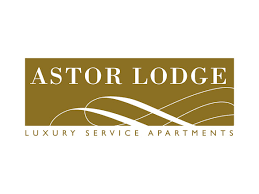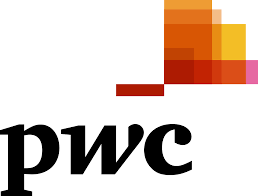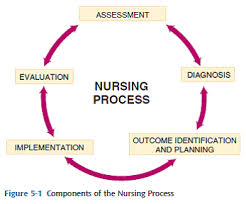
Astor Lodge & Suites Inc
Astor Lodge & Suites Inc Case Study
Order Instructions:
2. Assessment A1 – Assessable Case
Due 13 October (submitted to Turnitin)
Astor Lodge & Suites, Inc (35%) –
Kerin & Peterson page 338 Case Questions:
A: Specific Case Questions – worth up to 17.5%
Section A
One
1. How would you characterise the U.S. hotel industry in early 2005
Two
2. What is the current competitive positioning for Astor lodges & Suites, Inc
Three
3. How would you characterise the operational (e.g. occupancy rates, prices, costs per room,
etc) and financial performance (e.g. EBITDA – Earnings before interest and taxes and direct admin expenses) of Astor lodges & Suites, Inc. You need to be able to link sales and marketing expenditure to corporate financial metrics.
Four
4. Given Mr James charge to the senior vice president, how would you portray and assess sales and marketing initiatives, expenditures, and outcomes for fiscal 2004 and 2005?
Five
5.What should Kelly Elizabeth propose in her fiscal 2006 sales and marketing plan and budget
Astor Lodge & Suites, Inc (17.5%) – Kerin & Peterson page 338
Criteria for Part A
• • Maximum length 10 pages excluding appendices; cover page and table of contents. Your write-up can be a mixture of bullet point form and essay style [Times Roman, 12 point font single spacing, 2.5cm margins]. Answer each question separately.
• • Use headings to highlight which questions you are answering. Structure your answers using sub- headings if necessary to make it clear that you have used an analytical approach to reach your answers. The grader will be treating (apparently) random lists of issues with caution.
SAMPLE ANSWER
Contents
2.0 The U.S. Hotel Industry during the Early 2005. 3
3.0 Competitive Positioning for the Astor lodges & Suites. 5
3.11 Bargaining Potential of Suppliers. 6
3.12 Bargaining Power of Buyers. 7
3.13 The Intensity Competitive Rivalry within the Market. 7
3.14 Threat of Alternatives. 8
3.15 The threat of new Entry. 9
4.0 The Operational and Financial Performance of Astor Lodges & Suites. 11
5.0 Sales and Marketing Initiatives, Outcomes, and Expenditures for Fiscal Years 2004 and 2005. 14
6.0 Proposal for Sales and Marketing Plan and Budget for 2006. 16
Astor Lodge & Suites Inc Case Study
1.0 Introduction
The Astor Lodge & Suites Company was founded in 1979 and owns over 250 properties nationwide. It is the owner of 200 Astor Lodges and 50 Astor Lodge & Suites across the United States. The two major services that the company offers are Aston Lodge Economy Class Hotels and Aston Lodge & Suites Midscale Class Hotels. The top competing points for the hotel are service, price, and amenities. The company has six hotel segments including luxury, upper scale, upscale in the full-service hotels and midscale food and beverage, midscale, and economy in the category of limited-service hotels (Seoki et al., 2014, 87). This paper aims at exploring the characteristics/features of the hotel industry of US in the early 2005, identifying and evaluating the present competitive positioning that is associated with Astor Lodges & Suites Company, characterizing the financial and operational performance of Astor Lodges, portraying and assessing the sales and marketing initiatives used in Astor Lodges and offering recommendations on what should be in the firm’s sales and marketing budget schedule for the financial year 2006.
2.0 The U.S. Hotel Industry during the Early 2005
The period around the late 2004 and early 2005 in the hotel industry across the United States was characterized by a return on revenues following declines in the previous years. The lodging industry particularly returned to positive profit growth. It is estimated that a typical hotel in the country during this period achieved an 11.4 percent increase in profits compared to the previous years. The improved profitability followed a three-year recession in the hotel industry that pushed unit-level hotel profits to a 36.2% decline during the period between 2001 and 2003 (Singh et al., 2014, 205). Nevertheless, this improvement in revenues was still low and far from the previous levels achieved in the late 1990s.
During the early months of 2005, the hotels in the U.S recorded a 7.6% increase in their total revenue which in turn led to the 11.4% growth in operating profits. Indeed, the larger hotels with higher rates of rooms experienced the greatest increase in profitability. The resort hotels realized the greatest increase in profitability with their overall revenue growing by up to 9% and operating profits growing by about 17%. The combined revenue from the beverage department, rentals, food department, and other operated departments increased by 6.3%. Food revenues recorded the highest growth at 6.9% while the rental and other income grew by only 4.3%. Since the number of rooms occupied only grew by 4.3% it can be argued that some of the additional revenue sources increase emanated from the increased usage of hotel restaurants, retail shops, lounges, and recreational facilities in the hotels. Additionally, the cost of running these departments only grew by 5.9% thus indicating that the supplement revenue sources equally contributed to the overall increase in hotel profitability (Seoki et al., 2014, 89).
Operating costs constituted 45.9% the bulk of which emanated from labor and related costs expenses. The 6.3% increase in labor and related costs during this period contributed greatly to the 6% percentage increase in the total operating costs for the hotels. This implies that the overall operating costs excluding that of labor grew at a pace higher than the 6%. There are two components of hotel labor costs; employee benefits and wages and salaries. There was a noted 8.9% increase in employee benefits and 5.5% in salaries and wages. Consequently, undistributed operating costs increased by 6.5% (Singh et al., 2014, 209). Due to their nature (fixed and not greatly influenced by the changes in hotel business volume) they can be viewed as intentional costs by the management. The highest rise in undistributed operating cost was experienced in the administrative and general department which grew by 7.3%. Insurance costs in the hotel industry contrary to other operating expenses started stabilizing during the 2004/5 period. For instance, on average the hotels paid 1.8% less for general liability and property insurance during the period than previously (Seoki et al., 2014, 89).
Generally, the hotel industry in the U.S in 2005 can be described as being very fragmented with no one brand or company controlling a majority of the total hotel rooms. Overall, the major competing points for hotel were amenities, service, and price. Typically, full-service hotels provided food and beverage outlets such as lounges and restaurant, luggage service, a concierge, convention/banquet/meeting facilities, and room service. Limited-service hotels offered rental rooms and include midscale without beverage and food. All hotel segments have particularly indicated improved performance in terms of average daily rate, revenue per available room, and occupancy in early 2005.notably, the five major hotel segments indicated great variance on these measures of performance with the luxury hotel segment recording the most improvement.
3.0 Competitive Positioning for the Astor lodges & Suites
Competitive positioning focuses on the aspect of differentiation with the aim of winning the mindshare of the industry or market. Various models can be employed in the determination of a firm’s competitive positioning in the market. One of these models is porter’s five forces model, which contributes significantly to the determination of a company’s competitive positioning in an industry. Besides, this model can be employed in the determination of the level of attractiveness of a market (Seoki et al., 2014, 56). This framework is founded on the notion that there exist five forces within a market that determine its attractiveness and competitive intensity. This model assists in identifying position of power in a business situation as in the case of Astor Lodges. The model is significant in the comprehension of the strengths/power of a firm’s current competitive position alongside the strength into which the business may choose to look. This model is employed b strategic analysts in identifying areas of strengths, improving weaknesses and avoiding mistakes. The five forces associated with this model are bargaining power of suppliers, bargaining power of buyers, competitive rivalry within the market, threat of alternatives and threat of entry of novel/new firms. In addition, the SWOT analysis can be employed in determining the competitive position of Astor Lodges in the Industry.
3.1 Porter’s Five Forces
3.11 Bargaining Potential of Suppliers
This element is employed in the assessment of the easy with which suppliers can drive up or increase prices. The strength of suppliers in the market is determined by the number of suppliers supplying each essential raw material, uniqueness of the supplier’s service or product, relative strength and size of the suppliers, and the expense of alternating from one supplier to the other. In relation to this, it can be noted that the bargaining potential of suppliers in the industry in which Astor Lodges operates is high. The suppliers’ power is associated with presence of many firm in the industry to which the suppliers can shift their services (Seoki et al., 2014, 58). Some of the firms that exist in this market are Marriott, La Quinta Inn, Hampton Inn & Suites and Fairfield Inn. The presence of many companies within the industry subjects companies like Astor Lodges to intense competition approaches, which are aimed at attracting suppliers. Thus, firm have to ensure that they offer better contracts or payments to suppliers to avoid losing them to their rivals.
3.12 Bargaining Power of Buyers
As an aspect of determining a firm’s competitive position, the element of buyers’ bargaining potential involves the evaluation of the ease with which buyers can drive prices down. The strength of power of buyers in market is determined by the significance of every buyer to the organization and expenses involved in switching from one firm to the other. Currently, the bargaining power of buyers in the US hotel industry is high. The buyers obtain their strength from the fact that this industry is characterized by a monopolistic model, which is always associated with the ease of entry of new firms in the market (Seoki et al., 2014, 62). As a result, the industry has many companies, which raises the strength of buyers as they can easily move from one business to the other. As such, companies such as Astor Lodges should focus on providing suitable services and product to buyers to avoid losing tem to other businesses. Specifically, the lodging industry as a monopolistic competitive market possesses the following features;
- Differentiated products
- Ease of entry for new firms
- Many sellers
Multiple dimensions of competition
3.13 The Intensity Competitive Rivalry within the Market
This principle driver of this aspect is the number of and potential of competitors existing in the industry of market. In a situation in which the market has many competitors offering undifferentiated commodities and services, such a market is often associated with low attractiveness. High number of competitors in the firm often leads to a high intensity of competitive rivalry. On the other side, the existence of few firms in the market leads to a lower intensity of competitive rivalry. Being that the hotel industry in which Astor Lodges operates is associated with the monopolistic model new firms can easily enter it(Seoki et al., 2014, 64). Taking this aspect into consideration, the US hotel industry has many firms, which has resulted into a higher intensity of competition among businesses. Firms in this market struggle to beat each other by winning more consumers. Thus, Astor Lodges should ensure that it focuses on strategies that make it look unique in relation to its competitors as this can help it attract more buyers than them.
Competition within the hotel industry in U.S assumes a monopolistic model which implies that the company can only be able to influence the market position through altering the kind of product they offer to the market. Customers in such an arrangement are have clearly defined preferences concerning the products or services that expect from the company (Seoki et al., 2014, 67). As such, the company will always strive to differentiate their products from others from their competitors. In this context, it can be argued that a monopolistically competitive hotel will always manage to exploit the heterogeneity of its brand in order to reap high profits. Astor lodges & Suites being part of this monopolistic competitive industry has different types of hotels. Getting the many hotels to act as one proves to be a difficult task for the company’s management.
3.14 Threat of Alternatives
In a situation in which the industry is associated with the existence of close substitute services or products, the probability of buyers shifting to alternatives is often higher. On the other side, when the industry lacks close substitute services or products, the likelihood of buyers moving to alternatives is always lower (Singh et al., 2014, 61). Taking the two aspects into consideration, the hotel industry in which Astor Lodges operate is associated with the existence of alternative in relation to the services offered. Firms in this industry offer tow forms of services that are close to each other. There are firms that offer full-services by providing beverage and food outlets like restaurant and lounges, luggage service, convention/meeting facilities, a concierge and room services. On the other hand, there are organizations that offer limited-services. Taking the tow aspects into consideration, Astor Lodges & Suites is positioned as a limited service hotel and falls between the full-service and economy hotels. As such, the company is not faced with the threat of alternatives as it provides all the services that are offered in the industry. Moreover, the existence of Astor Lodges between economy and full-service hotels, implies that it is fighting other common names in this segment as Hampton Inn & Suites, Fairfield Inn, La Quinta Inn, and Marriott (Singh et al., 2014, 207). It is important to note that these are not necessarily competitors of the hotel. The top competing attributes for company are amenities, service, and price.
3.15 The threat of new Entry
Markets that are profitable attract new firms, thereby eroding the profitability that is associated with such markets. Unless incumbents possess durable and robust barriers to entry, then the profitability levels associated with such markets will decrease to a competitive rate. In relation to this, the US hotel industry can be considered profitable. In early 2005, hotels in this market were noted to have realized a total revenue increase of 7.6%. The increase in total revenue resulted into the growth or increase in operating profits to 11.4% (Seoki et al., 2014, 89). As such, new firms can be attracted easily to this market coupled by the fact that the market is associated with a monopolistic model that allows for easy entry of businesses.
3.2 SWOT Analysis
This model focuses on the strengths, opportunities, threats and weakness that are associated with the firm and market in which it operates. SWOT analysis offers a suitable platform on which Astor Lodges’ competitive position can be determined in an effective manner.
3.21 Strengths
- The hotel has a strong leadership dedicated to increasing and attracting more occupants for the hotel
- The embracing of the online communication platform is a big addition for the hotel in capturing business travelers
- The location of most of its hotels along major highways, airports, large shopping centers, and office complexes is a strong business strategy
- Currently the hotel is recording an above average occupancy rate with Astor Lodge & Suites Inc.
- It is also enjoying a high brand loyalty
- The hotels are recording a high revenue growth rate.
3.22 Weaknesses
- Complaints from most business guests since the hotel is seen as more adopting a business model inclined to vacationers
- Trends of its main target guests are changing.
- There is a projected increase of 2% in terms of direct cost of rented rooms.
- The hotel experiences low occupancy rates during the weekends.
- It is experiencing fiercer competition.
3.33 Opportunities
- Their prices are lower than the industry averages at $57.52 against the industry average of $61.50.
- The hotel industry in the country is experiencing a 7.6% growth
- Special offers for guests.
3.34 Threats
- Challenge presented by terrorist acts slowing down travel.
- Competition from large hotel chains such as Hilton.
- Its frontier strategy has not yet been rendered effective.
- Other major competitors have more property, greater presence and big reputation in the U.S.
4.0 The Operational and Financial Performance of Astor Lodges & Suites
Finance and operational performance of a company contributes significantly to the determination of its success in the market. Improvements in group, individuals or organizational performance cannot be realized in the absence of proper mechanisms of obtaining performance feedback or results. Feedback refers to having results of a task communicated to work group, employee or company. For organizations, performance measurement acts as a link between organizational goals and decisions. As such, managers should ensure that they are involved in active processes of evaluating their firms’ performances in relation to finances and operations for them to accomplish their business goals (Seoki et al., 2014, 78). Besides, this undertaking ensures that managers can make proper decisions on how the companies’ goals can be met.
Performance measurement provides a suitable platform on which suitable methods improving the company’s weaknesses in the evaluated areas can be established. Performance measurement focuses on two broad categories that include financial performance and operational performance (Singh et al., 2014, 109). Financial performance measurement focuses on the evaluation of the company’s income status while operational performance measurement focuses on the evaluation of the determinant of a firm’s results. Examples of results’ determinants in a company are inputs such as flexibility, quality, innovation and resource utilization.
Measurement of the business’ performance often takes into consideration five principle elements that include money, input/output associations, customers’ emphasis like quality and human resource. Within the area of operations, the measurement parameters that are often considered are quality measures, productivity measures, preventive maintenance, lead-time measures, utilization and performance to schedule (Seoki et al., 2014, 73). In this area, the specific measurement include cost of quality that is evaluated as budgeted versus exact/actual, variances that is evaluated as standard absorbed expenses verse actual costs, safety that is measured based on a common scale, profit contribution that is measured based on a common scale or measured dollars, and inventory turnover that is measured in terms of actual turnover versus budgeted turn over.
While measures of firms’ financial performances are always employed in gauging organizational performance, certain companies have witnessed negative outcomes from depending solely on such measures. In the real sense, traditional mechanisms of measuring the performances of firms are better at evaluating the consequences of past actions or activities than at projecting the performance of the future (Singh et al., 2014, 209). As such, managers should ensure that they do not depend on a single set of measures for them to realize clear targets. Many companies still depend on measures of efficiency and cost, when in some situations, such approaches as quality, services and time would be more suitable approaches. To be effective and efficient, performance yardsticks need to be subjected to a continuous evolvement so that they can manage to assess performance properly and target resources at continuous development.
The years 2004 and 2005 were part of the five consecutive year long profit draught for the Astor Lodges & Suites. Joseph James, the new CEO that the company had acquired developed a goal in which the company was expected to achieve profit within the following two years. The company with 250 properties across ten states in the Midwest had recorded a net-loss of $ 15.7 million (Singh et al., 2014, 209). As a result, four senior vice presidents were requested to meet and present the effects of the past five years. In addition, Kelly Elizabeth, a very experienced player in the marketing filed was brought on board to assist in underpinning the issue and in devising a new strategy to realize profits.
The marketing plan was expected to increase the overall occupancy. It was designed to attract pleasure travelers. An increase in the marketing plan advertising resulted in significant increase in media advertising budget to $ 11,360,000 (Seoki et al., 2014, 92). The marketing plan achieved the projected objective of increasing occupancy and weekend occupancy. However, the average daily rate did not change. The overall effect is that the lodging revenue and the revenue part room increased.
The projected annual revenues growth from the lodging segment was 7.4% for the year 2005. This was slightly below the industry average but at the same time higher than the growth rate in the segment. The company recorded a net loss for the third year while the industry recorded profits. As a result, the company had to close two under-performing lodges and opened one suite property. The projected consolidated company occupancy reached to 67.1% with average daily rate of $57.52 and revenue per room at $38.60 (Seoki et al., 2014, 94). Properties recorded an improved occupancy rate per room in 2004 but slowed in 2005. This is attributed to the free-night stay deal. Lodging expenses were projected at $211 million for the year 2005 including variable costs, utilities, direct labor, and supplies. Other expenses were estimated at $62.5million. Corporate expenses were estimated at $44.9 million, a $ 5.9 million increase from 2004 as a result of increased employee compensation, IT expenses, costs on sales and marketing, and health insurance (Singh et al., 2014, 208).
5.0 Sales and Marketing Initiatives, Outcomes, and Expenditures for Fiscal Years 2004 and 2005
The evaluation of a firm’s marketing and sales initiative is significant in ensuring that businesses develop suitable decisions on the selection of appropriate sales and marketing approaches. Marketing and sales initiatives serve as a game plan to the realization of the firm’s objectives. After the attainment of the company’s objectives, managers should ensure that they are involved in active evaluation of the sales and marketing initiative that their companies employed in achieving such goals (Seoki et al., 2014, 94). Such an undertaking is significant in evaluating and revealing how well a business has exploited the existing marketing opportunities within an industry using its capital resources and sales/marketing staff. Evaluation of the sales and marketing strategy can be accomplished using six steps.
The first step involves reviewing the initial/original goals of sales and marketing. Conducting this step is significant in addressing the changes in the sales/marketing goals that might have been encountered during the implementation process without the knowledge of the sales or marketing team. The second step involves the identification of the performance gaps that exist in the marketing or sales objectives. This process acts a suitable method of examining the company’s sales or marketing goals after the attainment of their deadlines (Seoki et al., 2014, 92). This objective can be accomplished by reviewing the financial and marketing/sales reports for the target product or service against their corresponding goals. The third step involves the evaluation of the effectiveness associated with a promotional approach. Sales/marketing and promotional campaigns are often developed to impact a firm’s market share. As such, this undertaking is vital in ensuring that the company acquires adequate knowledge on its market share and ways to increase such a market share. The fourth step takes into consideration the reviewing of the sales/marketing staff performance. This goal can be accomplished by reviewing specific marketing or sales goals for the individual members of staff. Moreover, it can be attained by focusing on the timescales established for sales/marketing plans against the exact performance data to verify whether the sales/marketing initiatives were executed in a timely manner (Seoki et al., 2014, 98). Furthermore, the sales or marketing plan budget should be reviewed in relation to the actual expense for implementing the sales or marketing plan. Taking the six aspects into consideration various aspects can be revealed about the sales and marketing approaches used by Astor Lodges in the financial years 2004 and 2005.
The sales and marketing segment of the hotel has lagged behind the other functions in terms of establishing substantial profit results from its expenditures. The growth rates can be rated in three categories hotel industry 7.6%, Astor Lodge & Suites, 7.4%, and limited service segment at 5.8%. Reports indicate a 50/50 split between leisure and business customers with a typical business customer estimated to spend about $ 81,000 per year paying $96 per room per night. A typical leisure customer estimated at $72,600 per year paying $89 per room per night (Singh et al., 2014, 209).
Currently the hotel is recording an above average occupancy rate with Astor Lodge & Suites standing at 67.1% against the industry average of 61.3%. All hotel segments have particularly indicated improved performance in terms of average daily rate, revenue per available room, and occupancy in early 2005.notably, the five major hotel segments indicated great variance on these measures of performance with the luxury hotel segment recording the most improvement with an increase of 3.5% in occupancy and an increase in revenue per available room of up to 39%. The occupancy was at 61.3%, revenue daily rate was at $53, and average daily use stood at $86 for the industry (Seoki et al., 2014, 95).
The Aston Lodges & Suites are recording a high revenue growth rate at 7.4% against the industry rate of 7.6%. This implies a positive financial performance in the recent past compared with previously. There is also a projected increase of 2% in terms of direct cost of rented rooms for the company. However, their prices are lower than the industry averages at $57.52 against the industry average of $61.50. Overall, the hotel industry in the country is experiencing a 7.6% growth (Singh et al., 2014, 209). The Aston Lodges & Suites registered a direct operating profit of $ 23.2 million in 2013 which was a 19.4% increase from the year 2012. The hotel average EBITDA has been growing steadily in an average annual rate of about 6% over the recent years. Generally, the hotel industry has recorded a $113.7 billion of revenues and $16.7 billion gross pre-tax profit and $ 4.4 million in hotel rooms in the same period compared with a 1.1 billion in 2011. This can be attributed to the recovery of the U.S economy as well as the growth being experienced in the consumer spending. For instance, the consumer spending in the U.S has been on the upward trend since the year 2011 with movement to $10912 in 2014 from $10373 in 2011 (Seoki et al., 2014, 97).
6.0 Proposal for Sales and Marketing Plan and Budget for 2006
Developing an effective sales and marketing budget and plan is significant in ensuring that companies accomplish their marketing/sales budgets within the required timescales and finance limits. When manager do not engage in the active development of sales/marketing plans and budgets, they can face several problems in the realization of their marketing and sales objectives (Singh et al., 2014, 102). Effective plan and budget development for organizations’ marketing and sales activities play a significant role in ensuring that resources such as time and money are utilized in an efficient and effective manner, thereby leading to a successful accomplishment of companies’ objectives. In relation to this, several issues should be considered in the development of the marketing/sales budget and plan for Astor Lodges.
First, the free-night-stay deal was one of the main causes for reduced revenues for the hotel. The strategy should have been to replace the free-night-stay with the weekend special deal. This was expected to increase the hotel’s occupancy rate, offer the deal to families seeking lower cost, and consequently return a part of lost revenues that had been experienced during the free-night-stay deal. The replacement would in turn return revenue lost by up to 50% and profits would have been projected at $ 22,552,680. Since the room rates are lower than the industry averages as established earlier in the discussion, it would be thoughtful for the company to increase their pricing. Prices could be increased to $60 for Astor lodges and $ 75 for Astor Lodge & Suites. As a result, the total profits for the 2006 would have been projected at $ 51,703,080 (Singh et al., 2014, 209). The rationale behind this would be that business customers are not so sensitive to higher prices since they are looking for booking rooms which the companies pay for. Concerning advertising, the company should change their media advertising budget allocation. For instance, they should focus more on attracting weekend leisure customers. The budget allocation for marketing should, therefore, be targeted to leisure customers. The change in allocation should be to 60% towards the business customer and 40% towards leisure customers (Seoki et al., 2014, 98). It is projected that leisure customers would be more likely responsive to learning about deals. More importantly, a hybrid mix of the three strategies would have been the most effective direction for the company marketing campaign.
By and large, there was a need to identify what the problem was and in so doing develop a way forward for the company starting 2004. The main challenge was the failure to make profits in five consecutive years. Generally, the hotel industry had recorded profits. The Aston Lodges & Suites failed to realize any profits despite the thriving hotel business during the same period.
7.0 References
Seoki, L, Yoon, K, & Qu, X 2014, ‘Internationalization and financial health in the US hotel industry’,Tourism Economics, 20, 1, pp. 87-105
Singh, A, Dev, C, & Mandelbaum, R 2014, ‘A flow-through analysis of the US lodging industry during the great recession’, International Journal Of Contemporary Hospitality Management, 26, 2, pp. 205-224.
We can write this or a similar paper for you! Simply fill the order form!












